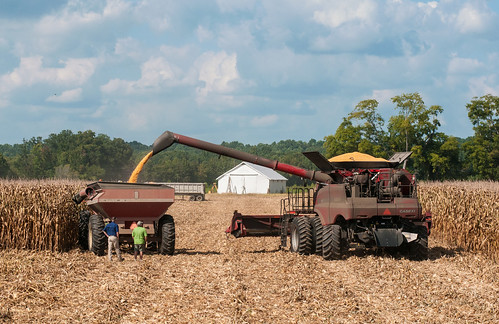
When drought and flooding impact crop production, or even in a year with good yields, good data is crucial to the agriculture industry.
USDA’s National Agricultural Statistics Service (NASS) conducts more than 400 surveys each year. Two of our larger and more impactful surveys are the annual Row Crops County Agricultural Production Survey (CAPS) and December Agricultural Survey, the results of which are combined to set our county average yields.
The Row Crops CAPS will survey thousands of farmers in my region – Kentucky, West Virginia, Virginia, North Carolina and Tennessee – to find out their acres planted, acres harvested and production of various crops including corn, soybeans, hay, tobacco, cotton and peanuts. This survey is mailed out Nov. 18, and the data collection period goes through early January.
The December Agricultural Survey asks additional farmers how many acres of certain crops they planted, how many acres they harvested and their yield per acre. This survey is mailed out Nov. 18, and the data is collected Nov. 28 through Dec. 13.
NASS’s county estimates are used in conjunction with other USDA agencies’ estimate calculations to set standards for insurance and risk protection programs many farmers rely on to protect their operations. USDA’s Farm Service Agency (FSA) relies on county-level estimates for Agricultural Risk Coverage (ARC), Price Loss Coverage (PLC), County Loan Rates, and its disaster program calculations. USDA’s Risk Management Agency (RMA) uses the data for administering the Area Risk Protection Insurance Plan, establishment of transitional yields, and determining when to make crop loss insurance payments.
NASS response rates are quite good in the survey sector these days, but we aren’t satisfied and are working to improve them. We need farmers and ranchers to continue to respond so the data are available for everyone to use. This is particularly important for these two surveys, because if we don’t receive enough reports, we can’t publish county estimates.
We often hear from farmers about the published county estimates, so it’s important to clarify NASS’s role in the county estimate process. NASS yields (our county estimates) go off harvested acres. FSA calculates the county estimate off planted acres, so there will sometimes be slight variations. While the two agencies’ roles are intertwined, NASS’s role is to simply survey the producers, calculate the data and publish it. FSA uses that data to calculate for their programs.
County estimates will be published on different dates beginning December 15 and according to a schedule available on the NASS website. Results of the December Agricultural Survey are published in the Crop Production Annual Report, which is scheduled for release on Jan. 12, 2017.
